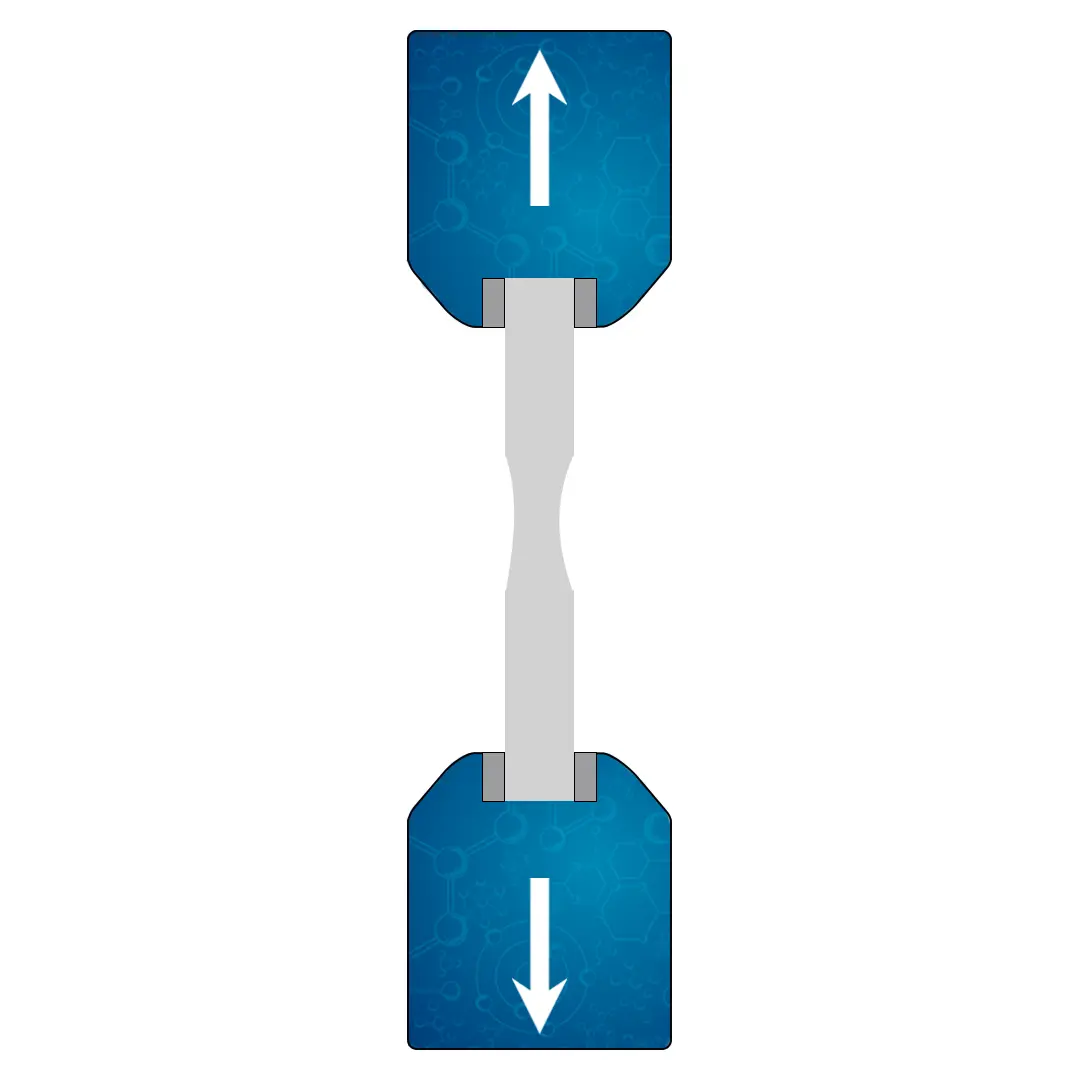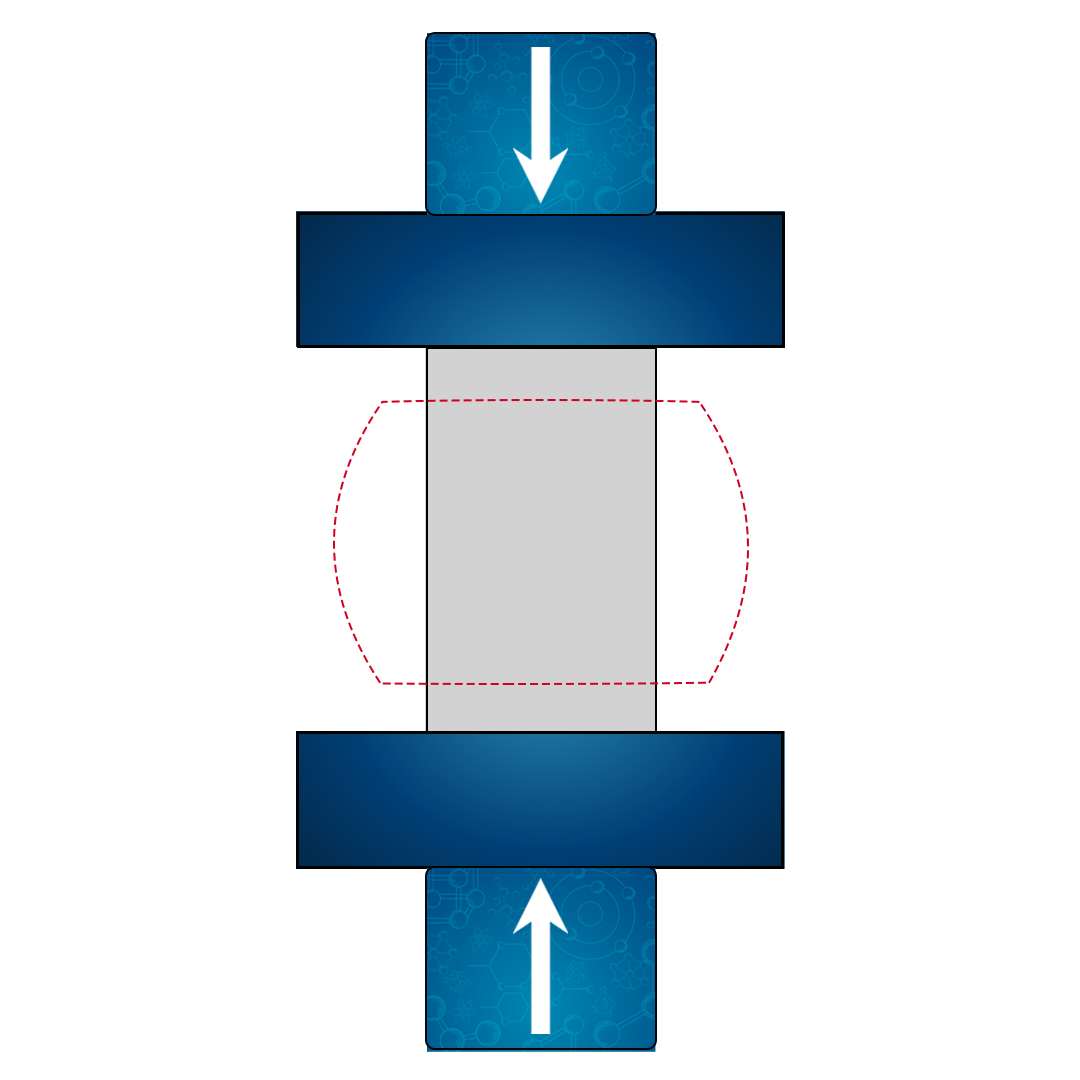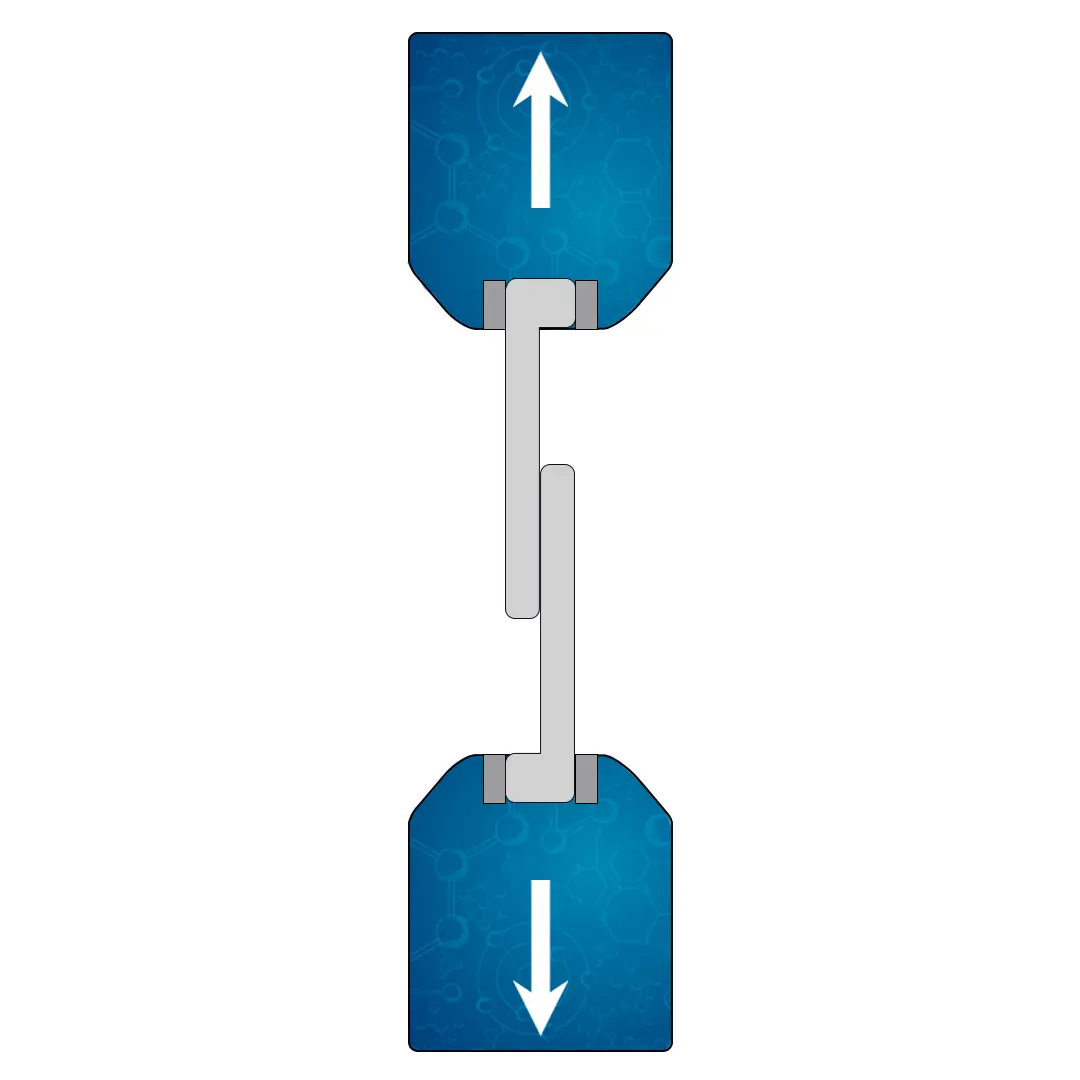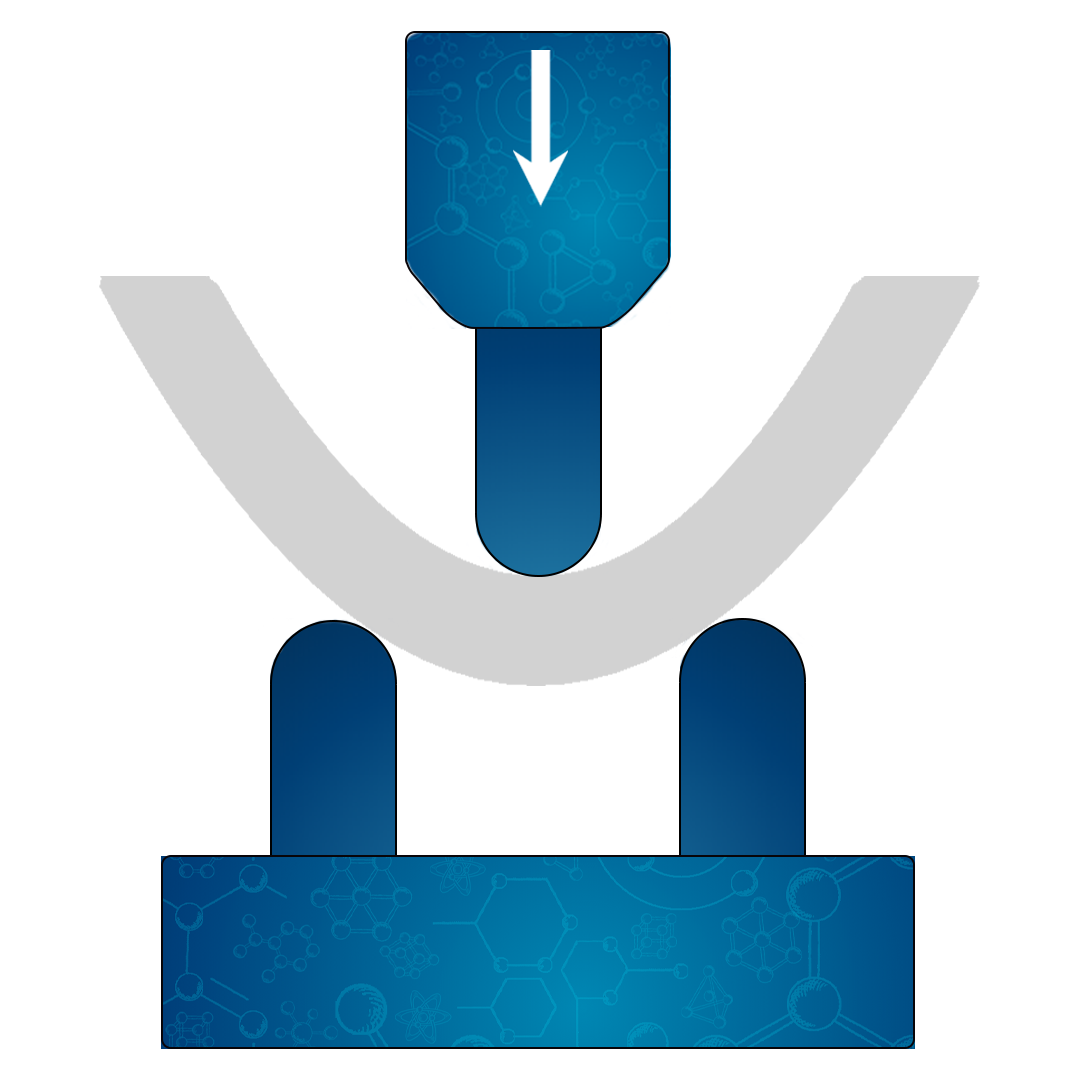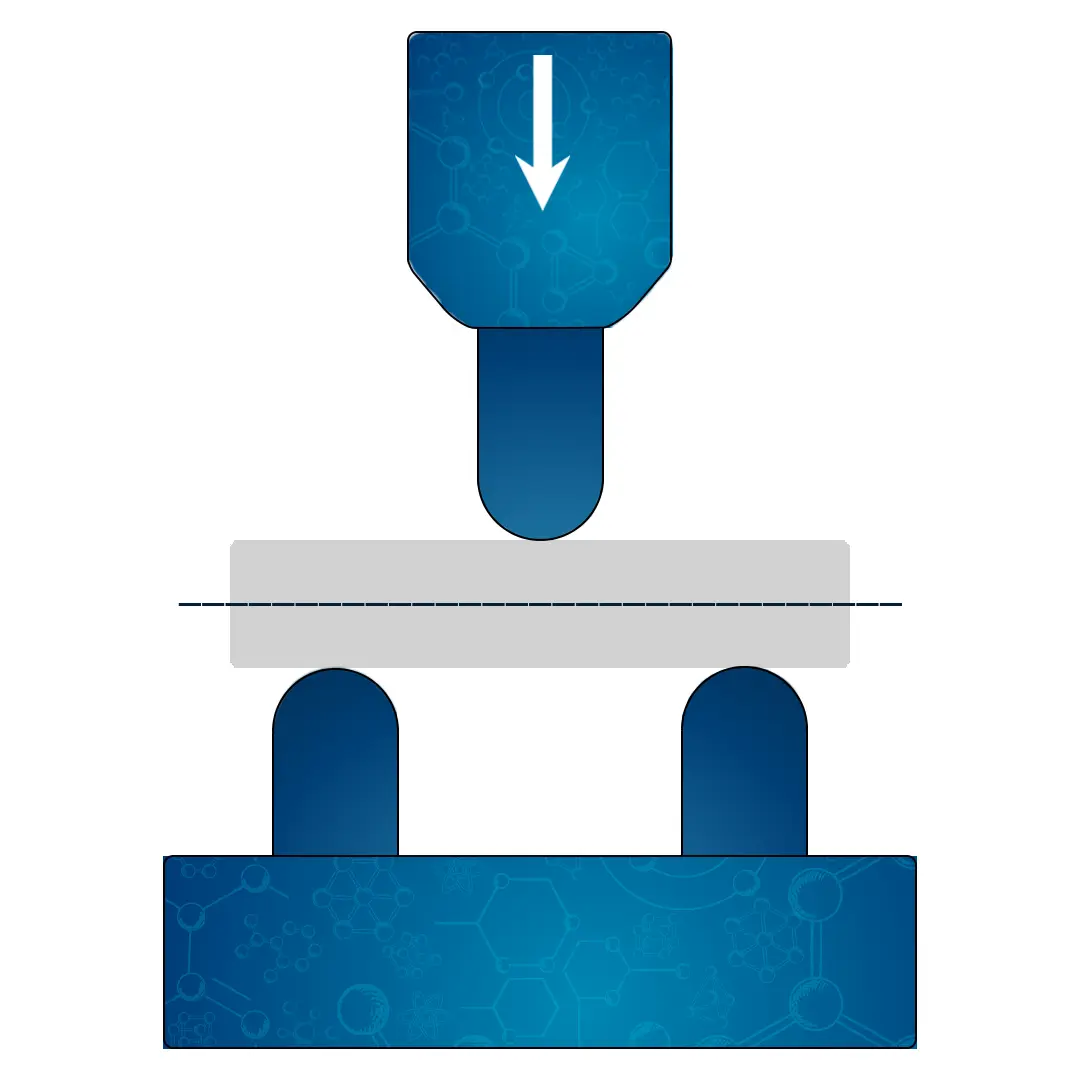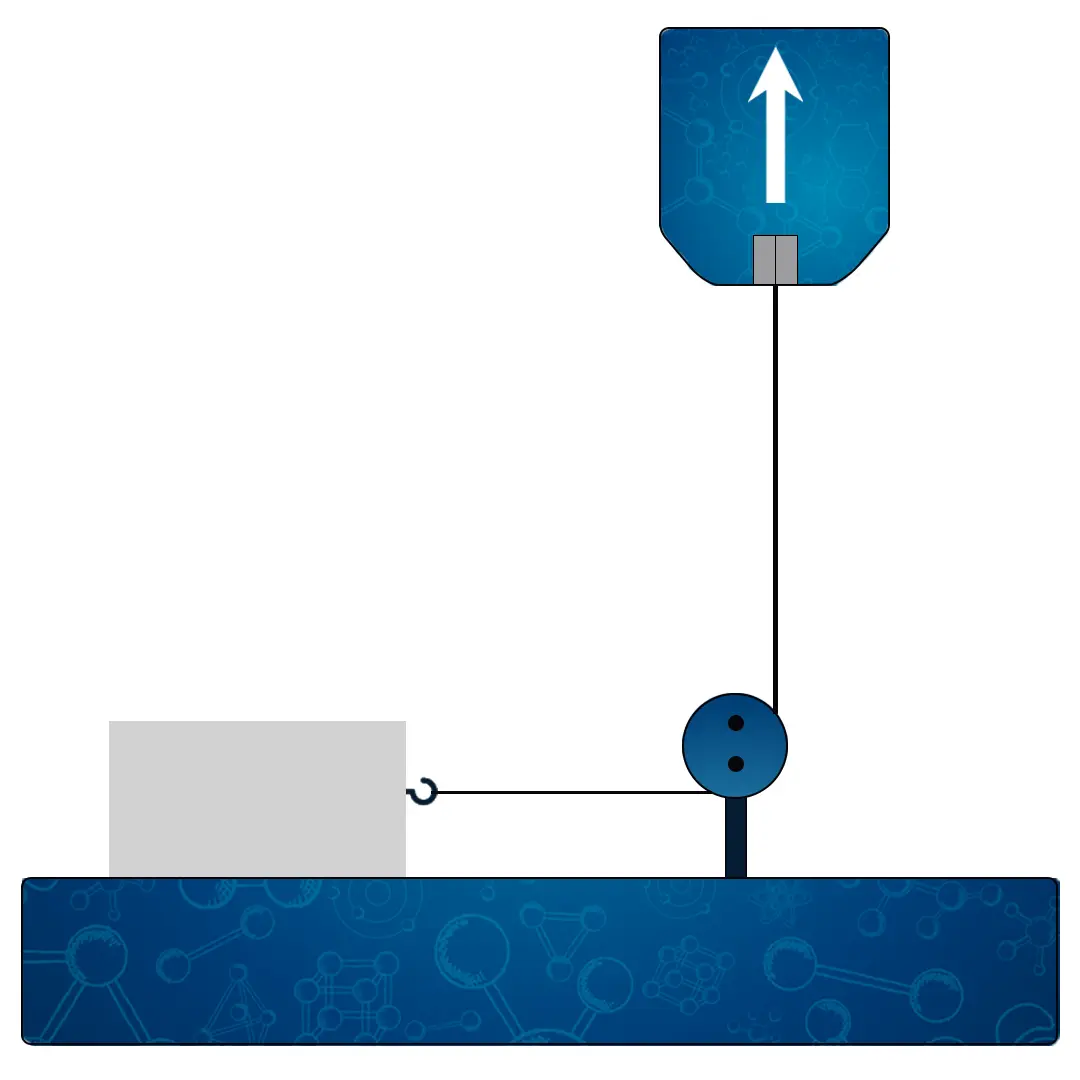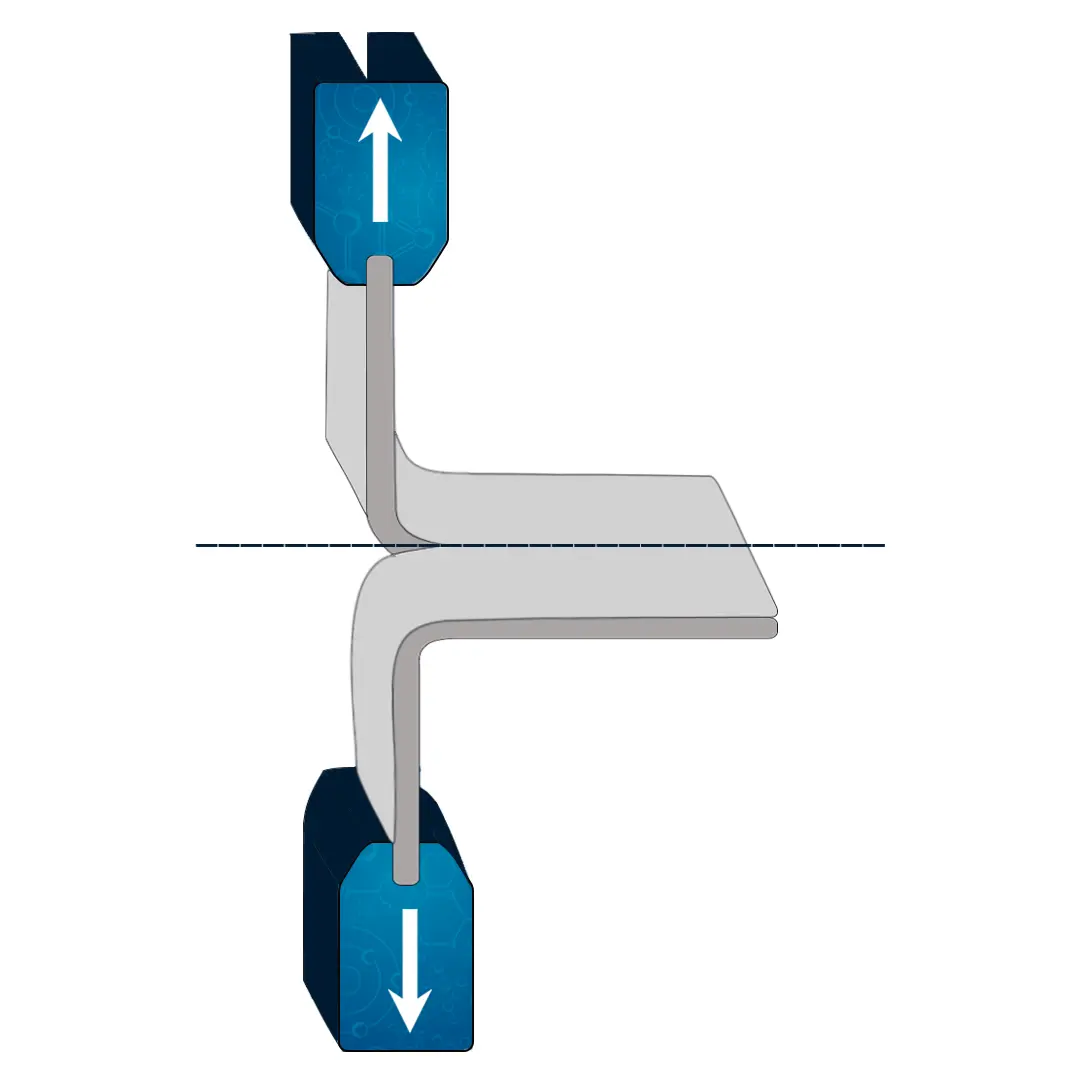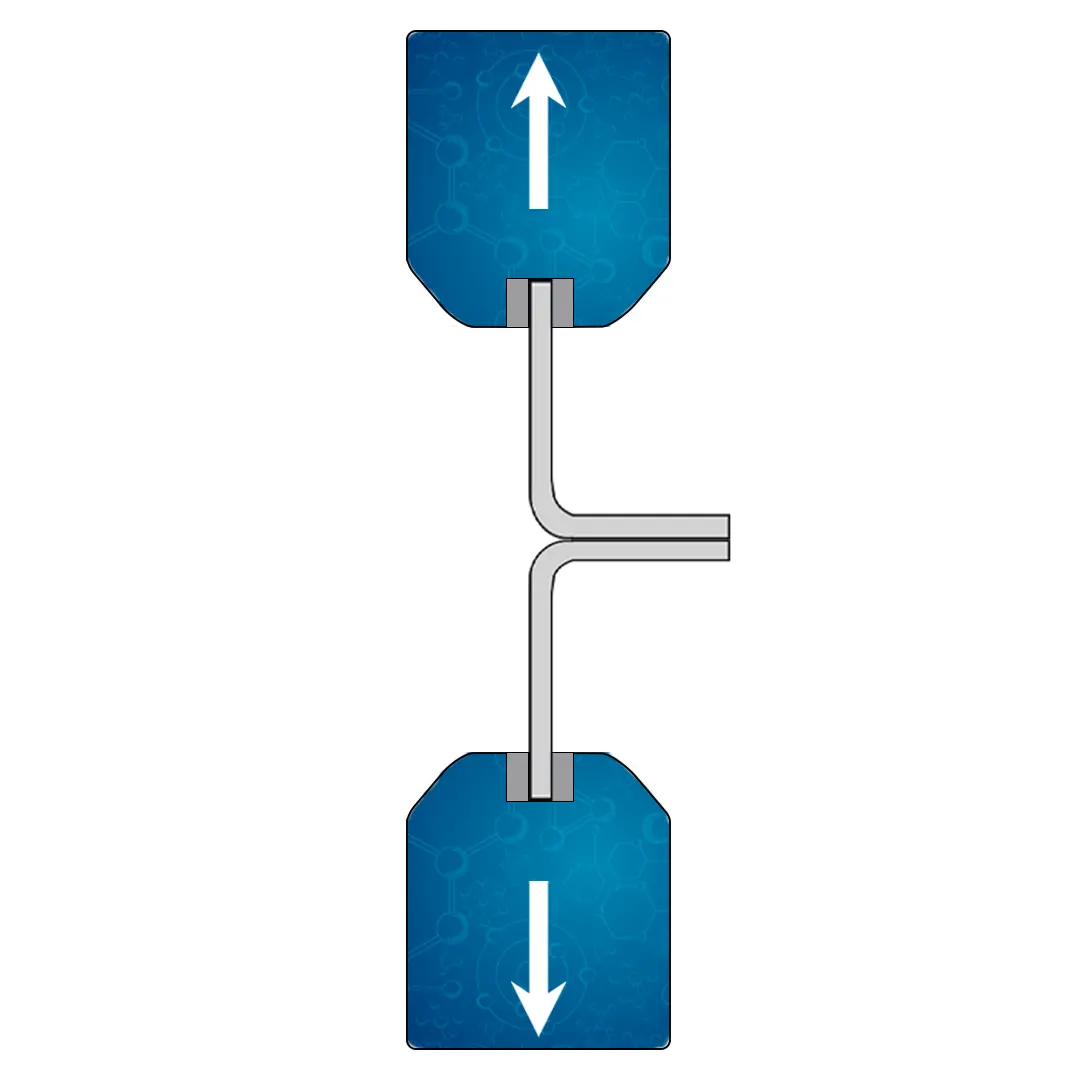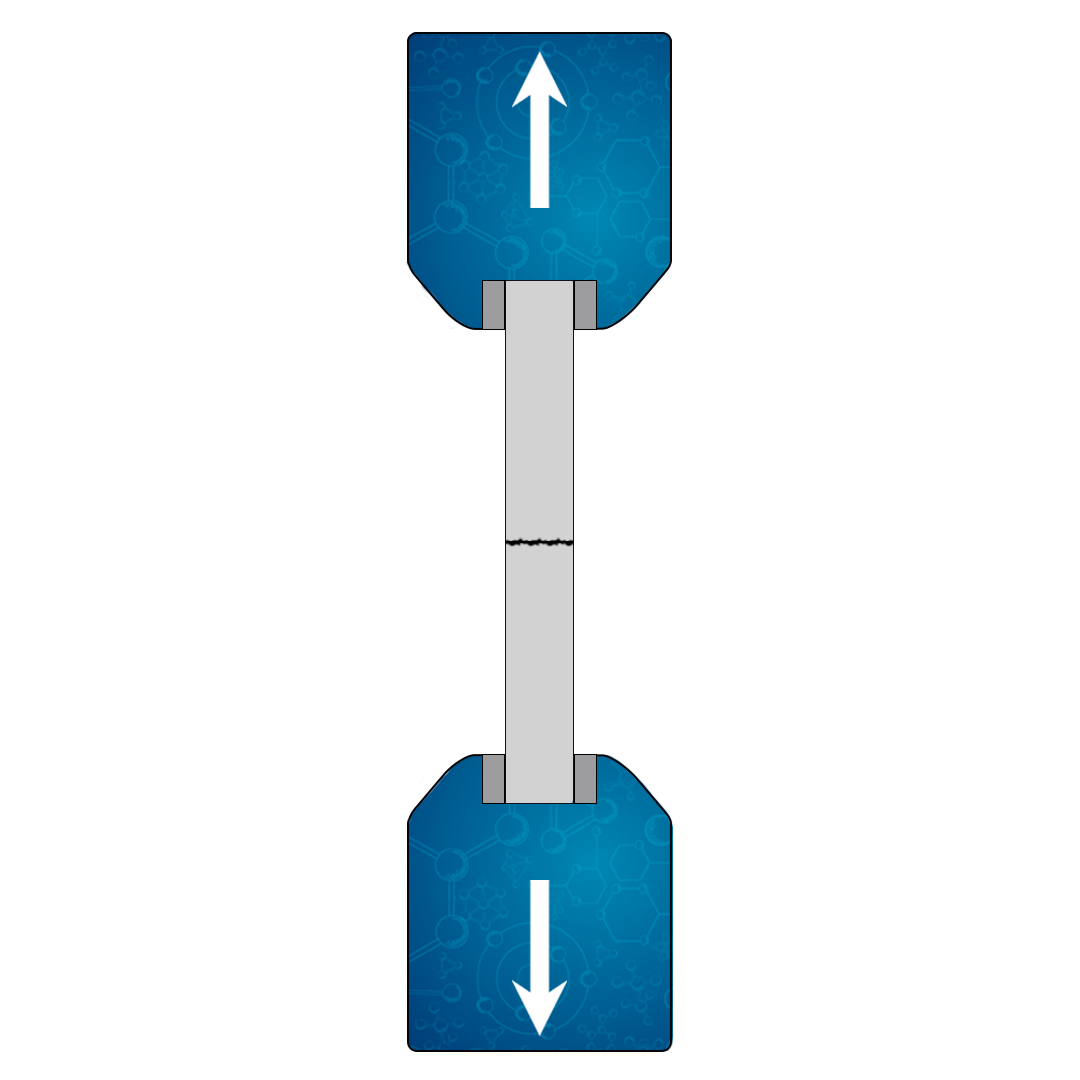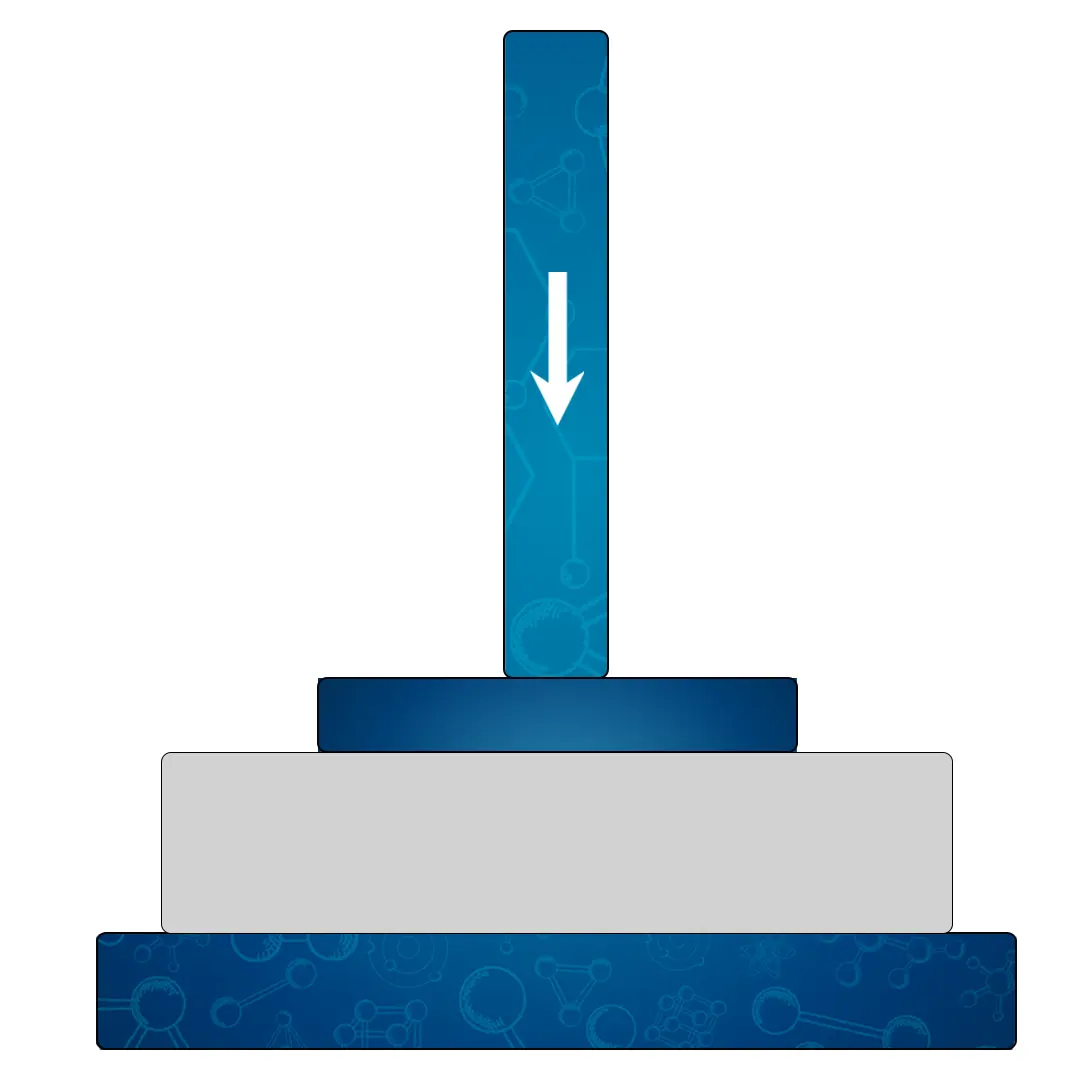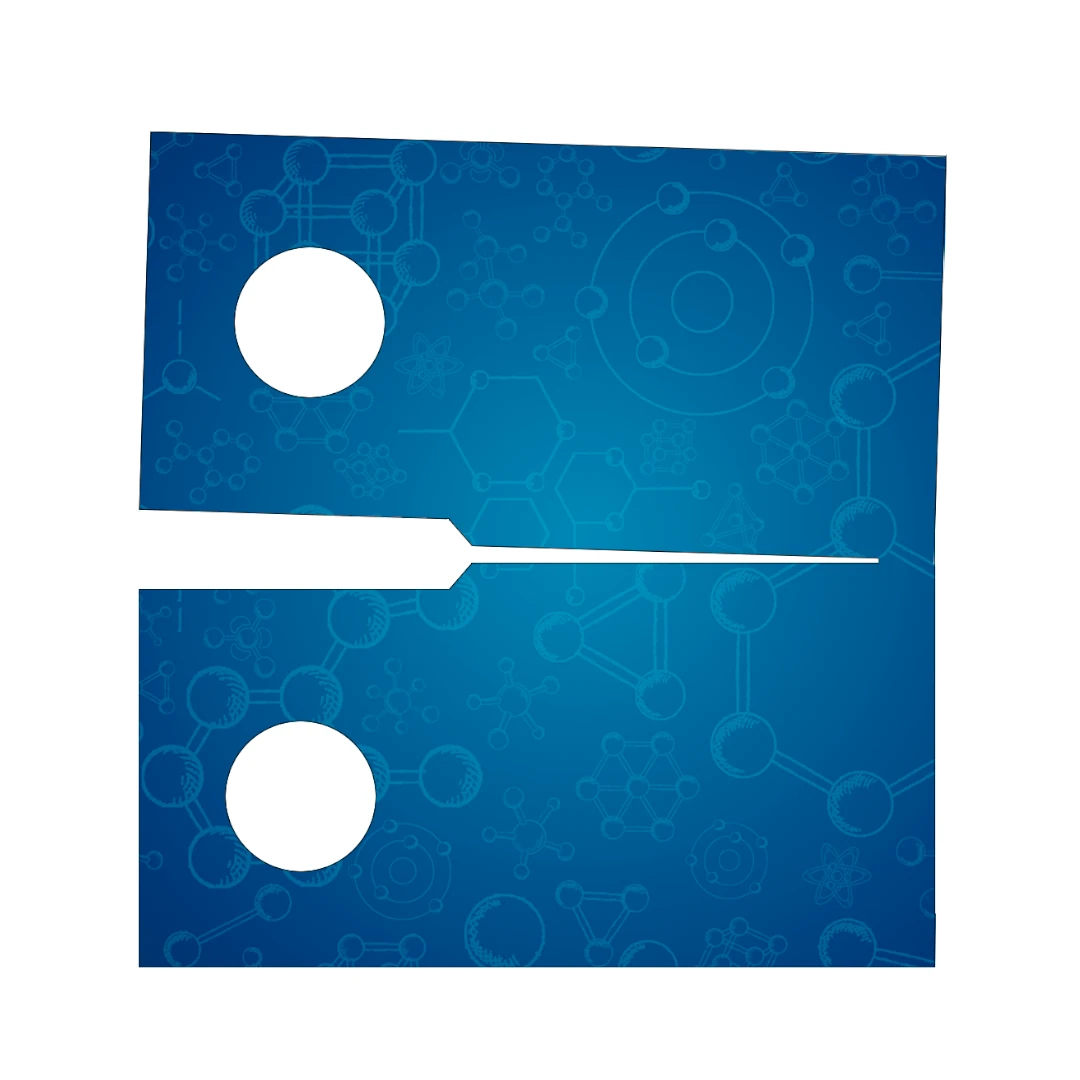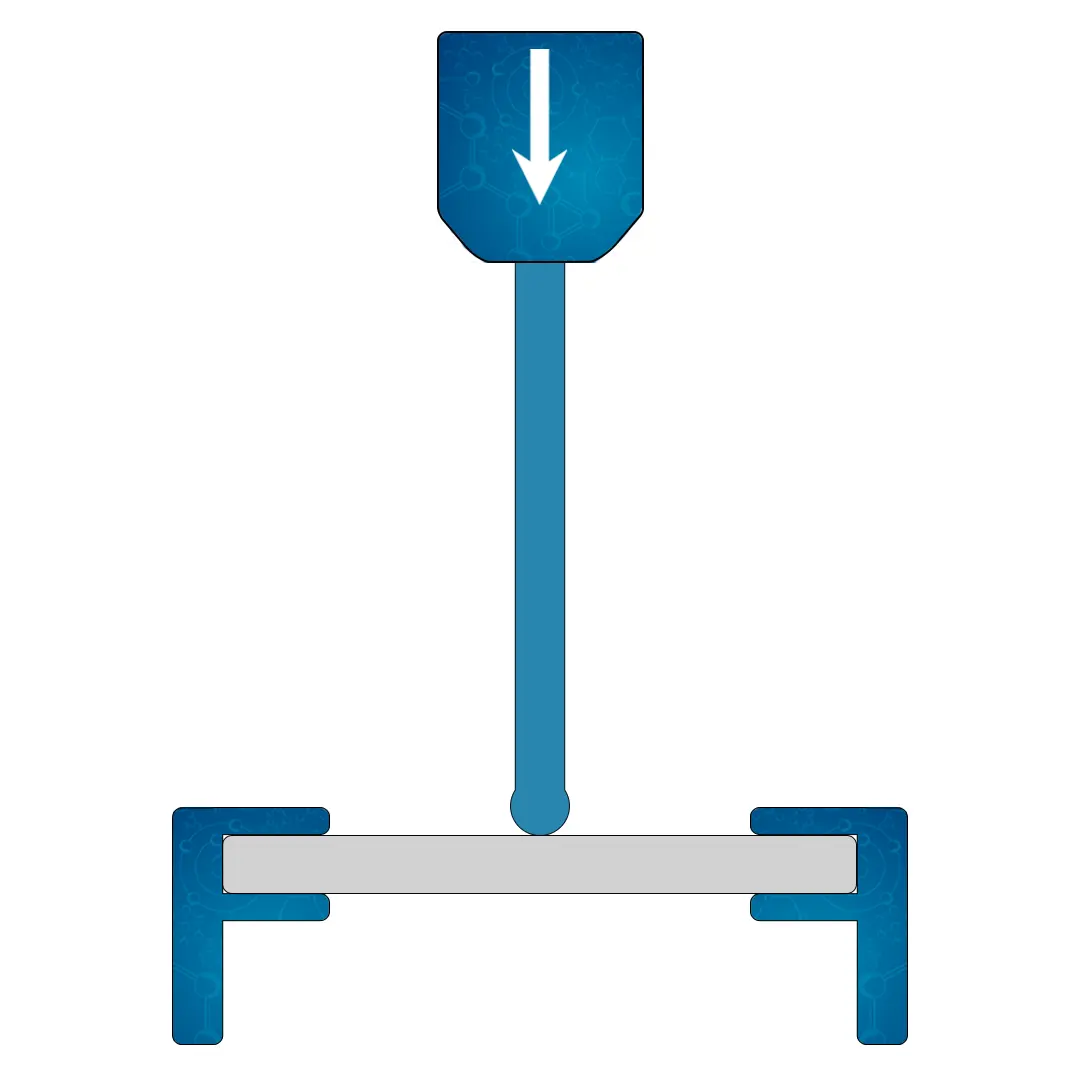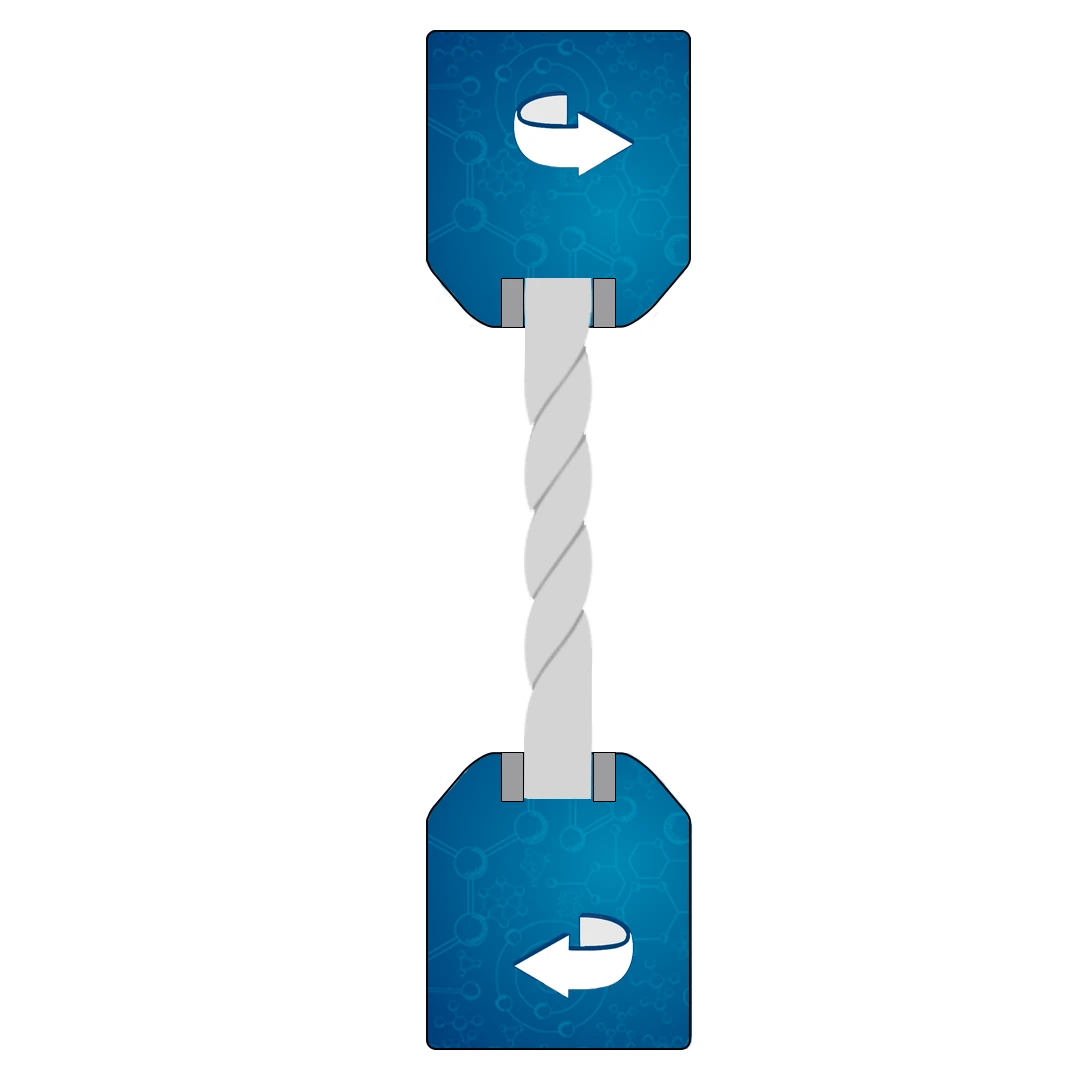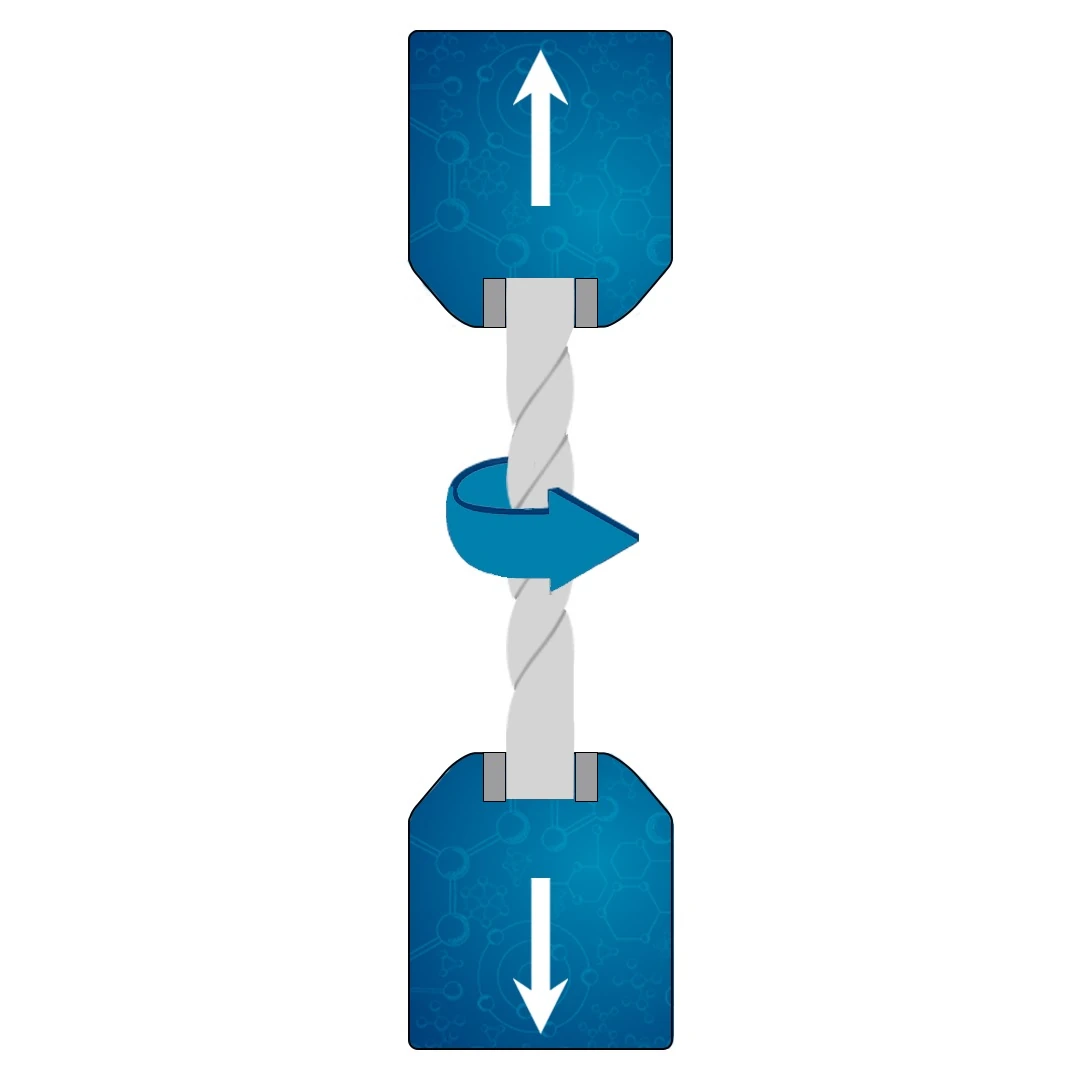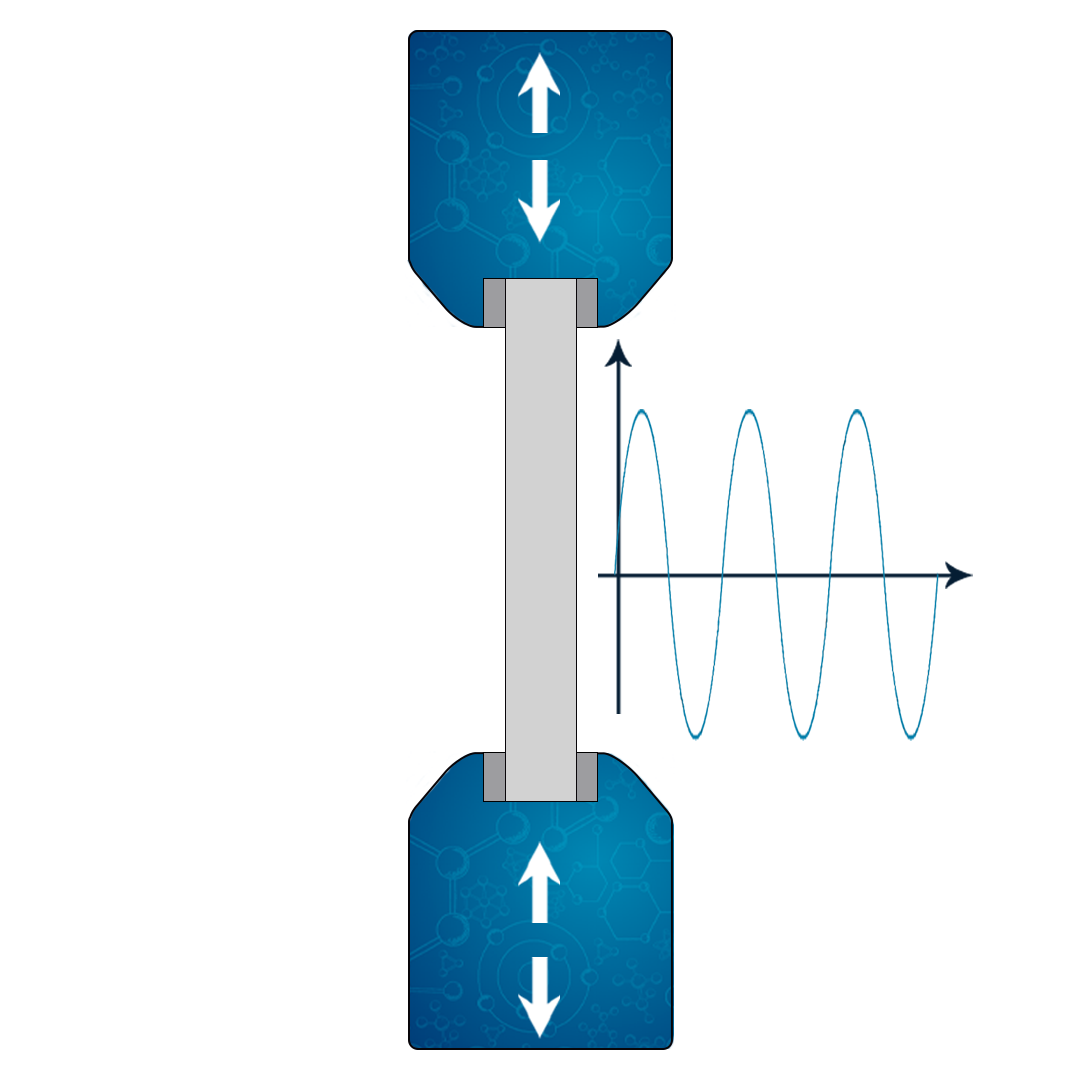Crush Testing: Comprehensive Guide to Understanding & Applications
In the following text, we will delve into the comprehensive study of Crush Testing, an essential aspect in the field of material science and engineering. From understanding the fundamentals like crush resistance, crush strength, and testing procedures to exploring applications, international standards, and state-of-the-art equipment, we will explore how this essential testing procedure shapes various industries.
What is Crush Resistance?
Crush resistance is a measure of a material’s ability to withstand forces or stresses that tend to compress or squeeze it. It is an essential mechanical property that indicates how well a substance can bear compressive loads without undergoing permanent deformation or failure.
In engineering and material science contexts, crush resistance is often quantified by conducting standardized tests that apply controlled compressive forces to a sample of the material. The resulting data, including the maximum force the material can withstand and the manner in which it deforms or fails under pressure, defines its crush resistance.
The evaluation of crush resistance is crucial in various industries such as construction, automotive, aerospace, and packaging. For instance, in the packaging industry, crush resistance ensures that containers and boxes maintain their shape and integrity when stacked or subjected to external forces. In construction, the crush resistance of building materials like concrete, steel, or bricks must be understood to ensure that structures can support the intended loads.
Overall, crush resistance is a vital parameter that informs material selection, product design, quality assurance, and compliance with safety standards, contributing to the creation of products and structures that are durable, reliable, and safe.
What is Crush Resistance Testing?
Crush resistance testing is a methodological process used to determine a material’s ability to withstand compressive forces or loads without undergoing significant deformation or failure. This testing is focused on evaluating how well a substance can resist forces that tend to compress or squeeze it, often applied to products that might be subject to such forces during handling, shipping, or usage.
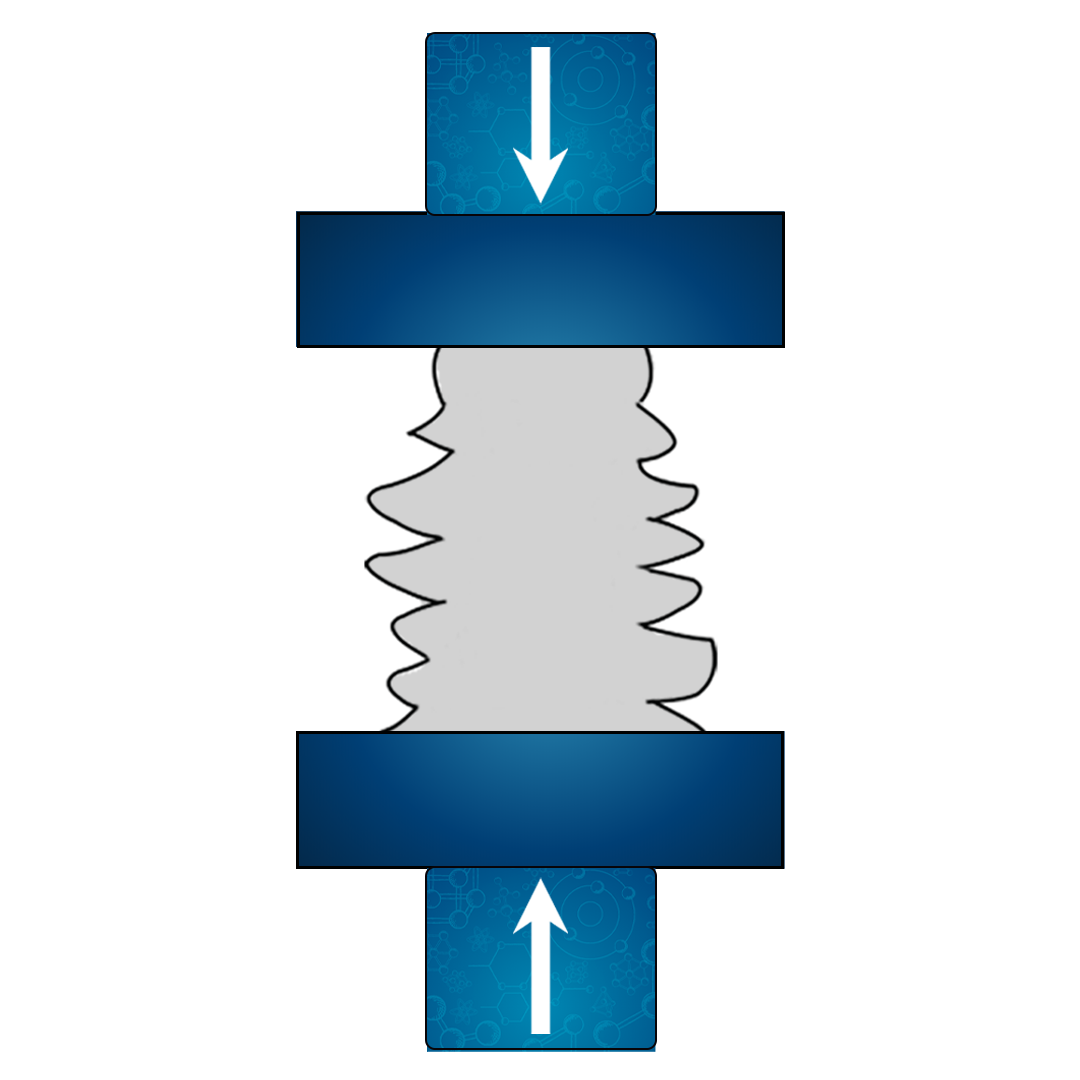
What is Crush Testing?
Crush testing is a method used to evaluate a material’s resistance to compressive forces or crushing. It involves the application of controlled compressive loads to a sample or specimen and monitoring its response to these forces. The primary goal is to determine the material’s ability to withstand such forces without significant deformation or failure.
Crush testing is widely applied across industries, including packaging, construction, aerospace, automotive, and pharmaceuticals. By understanding how materials respond to compressive forces, engineers and designers can make informed decisions on material selection, product design, quality control, and compliance with international standards. It contributes to the development of products that are robust, safe, and fit for their intended applications.
What is the Crush Tester?
A crush tester or Universal Testing Machine is a specialized piece of equipment designed to conduct crush resistance testing on various materials and products. It measures the material’s ability to withstand compressive forces without significant deformation or failure. A crush tester is an essential tool in industries like packaging, construction, automotive, and more, where understanding a material’s behavior under compression is vital for quality control, design, and compliance with standards.
Importance of Crush Testing
Crush testing is more than just a laboratory procedure; it plays a pivotal role in the entire material selection and design process. The insights obtained from crush testing guide engineers in selecting the right materials for specific applications, ensuring that they meet the required quality standards. It contributes to the development of safer, more reliable, and more efficient products.
Advantages of Using Crush Testing
Crush testing provides a host of advantages, including:
- Improved Material Selection: By understanding crush properties, engineers can choose materials that align with specific application requirements.
- Enhanced Quality Control: Regular crush testing ensures that products consistently meet quality standards, minimizing the risk of failure.
- Informed Design Decisions: Crush testing insights guide design optimizations, leading to more robust and efficient products.
Types of Crush Testing
Crush testing is a comprehensive area of study that encompasses various types of tests to evaluate different aspects of a material’s ability to withstand compressive forces. Each test type targets specific properties or applications. Here are some common types of crush testing:
Edge Crush Test (ECT):
The Edge Crush Test test is used to measure the edgewise compressive strength of corrugated board. It’s essential for determining the stacking strength of a carton or the ability of corrugated paper to resist crushing forces.
Ring Crush Test (RCT):
Often applied to paper and cardboard, the Ring Crush Test measures a material’s resistance to a crushing force applied radially. It’s vital in understanding how paper products will resist lateral pressure and maintain their shape.
Flat Crush Test (FCT):
The Flat Crush Test evaluates the resistance of corrugated paper or board to a crushing force applied uniformly. It’s vital for assessing how well the material can maintain its structure when forces are applied to its flat surfaces.
Core Crush Test:
The Core Crush Test is used to evaluate the compressive strength of the core material found inside products like paper rolls, textile rolls, etc. It provides insights into how well the core will support the product during handling and usage.
Honeycomb Crush Test:
Honeycomb structures are often used for lightweight, yet strong applications. This test evaluates the compressive strength of honeycomb materials and is crucial in industries like aerospace and automotive.
Catalyst Crush Test:
The Catalyst Crush Test is specific to the chemical and petrochemical industries, this test assesses the crush resistance of catalyst particles. It’s vital for understanding how catalysts will perform within reactors.
Cell Crush Test:
The Cell Crush Test is used with cellular materials like foams, this test measures how well the material can withstand crushing forces. It helps in understanding the material’s behavior in applications like padding, insulation, or structural components.
Bursting Strength Test:
Although not a crush test in the traditional sense, the bursting strength test is related in that it measures how well a material (usually fabric or paper) can withstand pressure without rupturing.
These different types of crush testing provide valuable insights into various aspects of a material’s performance under compressive loads. By understanding how materials behave under specific conditions, engineers and designers can make informed decisions regarding material selection, product design, and quality control, ensuring the durability, safety, and functionality of the products and structures they create.
How to Calculate the Crush Testing Test?
Crush testing is a complex process requiring specialized equipment and adherence to standardized procedures. It’s more than just plugging values into a formula; it involves careful preparation, execution, and analysis. The steps often include sample preparation, calibration of testing machines, precise control of testing conditions, measurement of force and deformation, and detailed analysis using specialized software.
What is the Crush Formula?
The crush formula is a mathematical representation used to calculate crush strength. It’s a fundamental expression, often defined as:
Where F is the force applied, and A is the cross-sectional area over which the force is applied. It forms the basis of understanding how materials will behave under compressive stresses.
Properties Obtained in Crush Testing
The properties obtained through crush testing provide a multifaceted understanding of how a material behaves under compressive stresses. These include:
- Crush Resistance: A fundamental measure of how well the material withstands compressive forces.
- Elasticity: Understanding how the material returns to its original shape after the pressure is removed provides insights into its elastic behavior.
- Yield Strength: This is the pressure at which the material begins to deform permanently. It’s a critical property for understanding when a material will begin to fail.
- Failure Modes: Identifying how the material fails under crushing, whether through shearing, buckling, or other mechanisms, helps in analyzing potential weaknesses in material design.
Universal testing machine for crush testing
A Universal Testing Machine (UTM), also known as a universal tester, materials testing machine, or tensile testing machine, is a crucial piece of equipment in the field of material science and engineering. It’s versatile enough to perform various types of mechanical tests, including crush testing.
Below are the essential parts and components of a UTM used in crush testing:
- Load Frame: The load frame is the primary structure of the UTM, typically composed of two strong vertical columns connected by a top and bottom crosshead. This rigid structure is designed to accommodate the high stress generated during testing.
- Crossheads: These are positioned at the top and bottom of the load frame. The upper crosshead is usually stationary, while the lower crosshead can be adjusted depending on the length of the specimen.
- Load Cell: This is a transducer that converts force into an electrical signal, allowing the UTM to measure the load applied to the specimen. Its accurate calibration is crucial for precise testing.
- Actuator: Typically driven by hydraulic, mechanical, or electromechanical means, the actuator applies the required load on the specimen. In some machines, the actuator’s position is adjustable to accommodate specimens of different sizes.
- Grips/ Fixtures: These hold the test specimen in place during testing. For shear testing, a specific shear test fixture might be used. The grips/fixtures must be chosen carefully to ensure they don’t slip or induce additional stresses that could interfere with the test results.
- Extensometer: This device is used to measure the deformation or strain in the test specimen during the application of force.
- Control Unit: This component controls the speed and direction of the load, the parameters of the test, and other variables. In modern UTMs, the control unit is typically a computer running specialized software.
- Output Device: This could be a computer monitor or a printer that provides a visual representation of the test results, often in the form of a stress-strain graph or a detailed test report.
- Safety Guards: These are essential to protect operators from flying debris in case of a specimen fracture or fixture failure.
Each of these components plays a critical role in the functioning of a UTM. For accurate and reliable results, the UTM should be regularly calibrated and maintained according to the manufacturer’s guidelines and relevant industry standards.
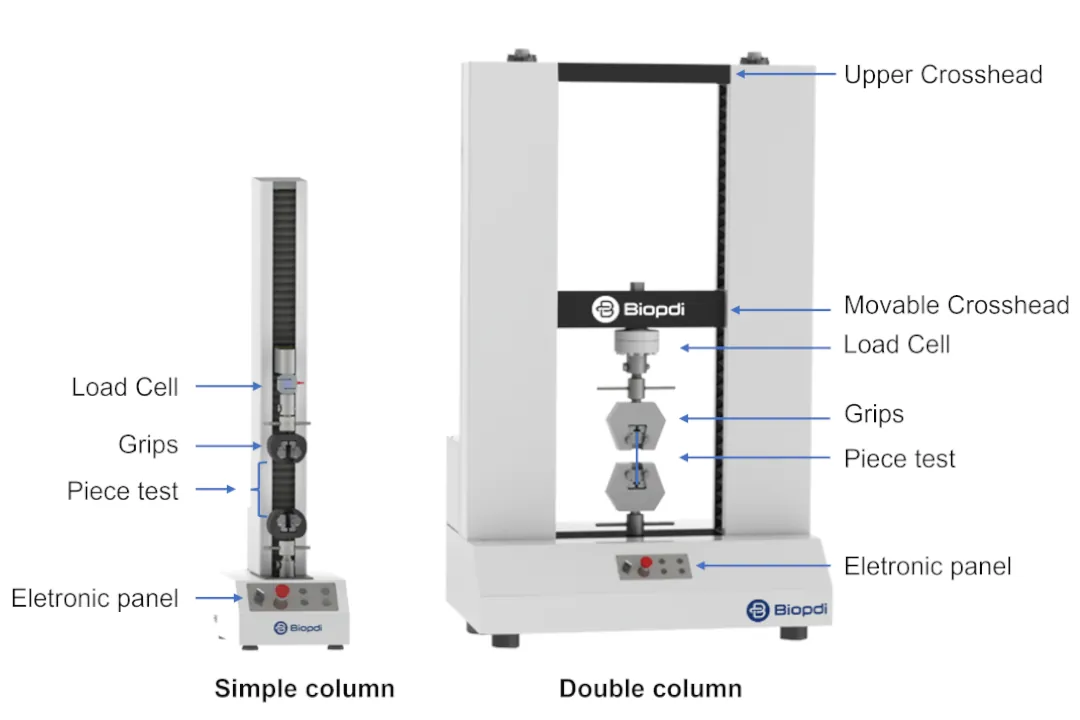
Procedures for Conducting Crush Testing Using a Universal Testing Machine
Conducting crush testing using a UTM requires careful planning and execution. The steps include:
- Sample Preparation: Ensuring that the samples are of the right size and shape, often requiring precise cutting and shaping to standardized dimensions.
- Machine Setup: This involves calibrating the UTM, selecting the right grips and fixtures, and setting up the test according to the specific standard being followed.
- Test Execution: With everything in place, the test is conducted, applying the compressive force according to the predefined protocol.
- Data Collection: Modern UTMs are equipped with software that records all relevant data, including force, deformation, time, and other parameters.
- Analysis and Reporting: This final stage involves processing the data to determine the material’s crush properties, often resulting in a detailed report outlining the findings.
Data Obtained in Crush Testing Using the Universal Testing Machine
The data obtained from crush testing using a UTM provides a detailed understanding of how the material behaves under compressive stress:
- Crush Strength or Resistance: These key metrics define the material’s behavior, quantifying how much force it can withstand without failure.
- Elastic Modulus: This measure of the material’s elasticity provides insights into how it will return to its original shape after the force is removed.
- Stress-Strain Curves: These graphical representations of how the material responds to applied pressures provide a comprehensive view of its mechanical behavior.
- Failure Analysis Data: If the material fails during testing, this data provides insights into the failure mechanisms, informing future design optimizations.
Samples/Specimens Used to Perform Crush Testing in the Universal Testing Machine
The samples or specimens used for crush testing must be carefully selected and prepared. They must represent the material’s real-world behavior, requiring consideration of factors such as:
- Material Type: Different materials, such as metals, plastics, and composites, require specific preparation and handling.
- Sample Geometry: The shape and size of the sample must align with standardized requirements, ensuring consistency and comparability of results.
- Surface Condition: The sample’s surface quality can affect the test results, requiring careful preparation and inspection.
Main Standards for Obtaining Crush Testing
Crush testing is governed by various international standards to ensure consistency, reliability, and comparability of results across different laboratories and applications. Here’s a breakdown of five primary ISO (International Organization for Standardization) and five ASTM (American Society for Testing and Materials) standards related to crush testing:
ISO Standards:
- ISO 3035: Specifies the method for determining the compressive strength of corrugated fiberboard, including the Edge Crush Test (ECT).
- ISO 7263: This standard covers the method for Ring Crush Test (RCT) for paper and board.
- ISO 12192: Details the procedure for conducting the Flat Crush Test (FCT) on corrugated fiberboard.
- ISO 844: Related to rigid cellular plastics, this standard outlines the method for determining compressive strength.
- ISO 1924-2: This standard pertains to the determination of compressive strength properties in the machine direction for paper, board, and pulps.
ASTM Standards:
- ASTM D642: Standard Test Method for Determining Compressive Resistance of Shipping Containers, Components, and Unit Loads.
- ASTM D695: Standard Test Method for Compressive Properties of Rigid Plastics, detailing how to test plastic materials under compressive loads.
- ASTM D2412: Test Method for Determination of External Loading Characteristics of Plastic Pipe by Parallel-Plate Loading, focusing on crush properties for plastic pipes.
- ASTM C773: Standard Test Method for Compressive (Crushing) Strength of Fired Whiteware Materials.
- ASTM C165: Standard Test Method for Measuring Compressive Properties of Thermal Insulations, which includes the procedures for testing the compressive properties of thermal insulation materials.
Main Applications of Crush Testing
Crush testing is applied across various industries, each with specific needs and requirements:
- Packaging Industry: Ensuring that containers and packaging can withstand handling, shipping, and storage forces without failure.
- Construction: Evaluating building materials to ensure they meet structural requirements and safety standards.
- Aerospace: Assessing materials for lightweight, strong components that can withstand extreme pressures and temperatures.
- Automotive: Ensuring that materials used in vehicles meet the demands of daily use, safety standards, and efficiency requirements.
- Pharmaceuticals: Ensuring that packaging and containment solutions preserve the integrity of medical products.
Additional Information About Crush Testing
Crush testing is continually evolving, with ongoing research and technological advancements enhancing its precision, efficiency, and relevance. The increasing automation and integration of machine learning algorithms are pushing the boundaries of what crush testing can achieve.
With growing demands for sustainable materials, crush testing is also adapting to evaluate new, environmentally friendly alternatives. The interplay between crush testing and computational modeling is another exciting frontier, enabling more accurate predictions of material behavior.
By embracing these innovations, crush testing continues to play a vital role in ensuring product quality, safety, and performance across a wide array of industries. Its importance cannot be overstated, as it forms the foundation for sound engineering decisions, responsible manufacturing practices, and technological advancements that shape our world.
Conclusion
Crush testing is an indispensable aspect of material science and engineering. Its widespread applications, ranging from packaging to aerospace, emphasize the significance of understanding and employing this testing method. Through accurate measurement of crush resistance and strength, engineers can make informed decisions about material selection, design, and quality control, fulfilling the demands of various industries.
FAQ (Frequently Asked Questions)
What is Crush Resistance?
Crush resistance is the ability of a material to withstand compressive forces without undergoing significant deformation or failure. It’s a critical property in various industries like construction, packaging, and automotive.
How is Crush Resistance Tested?
Crush resistance is tested through specific methodologies using equipment like a crush tester or Universal Testing Machine. The testing can include various types such as Edge Crush Test, Ring Crush Test, or Flat Crush Test, depending on the material and application.
What is a Crush Tester?
A crush tester is a specialized piece of equipment designed to conduct crush resistance testing. It measures the material’s ability to withstand compressive forces and includes components like loading frames, force application systems, and measurement systems.
What Properties are Obtained from Crush Testing?
Crush testing provides insights into properties like compressive strength, modulus of elasticity, yield strength, deformation characteristics, energy absorption, Poisson’s ratio, resilience, ductility, and more.
Are There Specific Standards for Crush Testing?
Yes, crush testing is governed by various international standards, including ISO and ASTM. These standards ensure consistency, reliability, and comparability of the results.
Why is Crush Testing Important?
Crush testing is vital for understanding how materials behave under compressive loads. It informs decisions related to material selection, product design, quality control, and safety, ensuring that materials and products meet required specifications.
What are Some Common Types of Crush Testing?
Some common types include Edge Crush Test (ECT), Ring Crush Test (RCT), Flat Crush Test (FCT), Core Crush Test, Honeycomb Crush Test, and more. Each type targets specific properties or applications of the material.
What Industries Rely on Crush Testing?
Crush testing is essential across various fields, including construction, packaging, automotive, aerospace, petrochemicals, and more. It plays a significant role in the design, manufacturing, and quality control processes within these industries.
What are the Samples/Specimens Used in Crush Testing?
The samples or specimens used in crush testing are usually prepared in standard sizes and shapes that represent the material or product being evaluated. They may include corrugated boards, plastics, ceramics, foams, and other materials depending on the test.
Can Crush Testing be Conducted on Finished Products?
Yes, crush testing can be applied to both raw materials and finished products, such as shipping containers or automotive components. This ensures that the products meet specific standards and can perform adequately in their intended applications.
How do you do a crush test?
A crush test is performed using specialized equipment, such as a crush tester or Universal Testing Machine. The sample is prepared according to specific standards, placed between the compression plates, and a compressive force is applied at a controlled rate until the sample fails or reaches a predetermined deformation. The data is then analyzed to determine the material’s crush resistance properties.
What is the crush strength test method?
The crush strength test method measures the maximum compressive force a material can withstand without failure. It’s conducted by applying a gradually increasing compressive load to the specimen until it collapses or deforms significantly. The crush strength is then calculated based on the maximum force applied.
What is the flat crush test method?
A: The flat crush test method evaluates the resistance of corrugated paper or board to a crushing force applied uniformly to its flat surface. It is vital in assessing how well the material maintains its structure when forces are applied to its flat surfaces.
Why is crushing strength important?
A: Crushing strength is important because it provides insight into how well a material can withstand compressive loads. This understanding is crucial in various applications, ensuring that materials can support the loads they encounter without failing prematurely.
What is the difference between box compression test and edge crush test?
The box compression test measures the compressive strength of a complete box, evaluating how much load the box can withstand without failure. The edge crush test, on the other hand, specifically measures the edgewise compressive strength of corrugated board. While the ECT focuses on the material itself, the box compression test evaluates the finished product.
What is the purpose of the edge crush test?
A: The purpose of the edge crush test (ECT) is to measure the edgewise compressive strength of corrugated board. It’s essential in determining the stacking strength of a carton or the ability of corrugated paper to resist crushing forces, providing key insights for packaging design and material selection.
See more relevant posts
TENSILE TEST
Tensile testing is a crucial mechanical test used to evaluate the strength and ductility of materials. It involves applying a controlled force. See more
COMPRESSION TEST
Compression testing is a fundamental evaluation method employed to assess a material's ability to withstand compressive forces. See more
SHEAR TEST
Shear testing examines a material's response to forces acting parallel to its surface. By applying a force that causes one part of the material. See more
BEND TEST
Bend testing is a mechanical test that determines a material's flexibility and resistance to fracture under bending forces. See more
FLEXURAL TEST
Flexural testing, also known as the three-point bend test, is employed to measure a material's resistance to bending or flexural stress. See more
FRICTION TEST
Coefficient of friction test measures the amount of resistance between two surfaces in contact when one moves relative to the other. See more
TEAR TEST
Tear test determines a material's resistance to tearing forces, often encountered in applications involving thin films, fabrics. See more
PEEL TEST
Peel testing evaluates the strength of adhesion between two materials, typically an adhesive and a substrate. The test involves separating. See more
BOND TEST
Bond test measures the strength of a bond between two materials. It's used in adhesive and weld test. It helps in determining the reliability of joints and interfaces. See more
INDENTATION TEST
Indentation Force Deflection (IFD) is used to characterize the cushioning or compressive properties of a material, especially foams and soft polymers. See more
FRACTURE TEST
Fracture toughness is a material's ability to resist crack propagation. This property is vital for assessing a material's suitability for applications where structural. See more
PUNCTURE TEST
Puncture test examines a material's ability to withstand penetration by sharp objects or forces. This test to evaluate puncture strength and design materials. See more
CRUSH TEST
Crush resistance test measures a material's ability to resist deformation, particularly in terms of compressive force. See more
TORSION TEST
Torsion testing is a critical method in materials engineering, examining how products and materials behave under twisting forces. See more
AXIAL TORSION TEST
Axial torsion test examines a material's behavior when subjected to simultaneous axial and torsional loads. This test to study shear stress. See more
FATIGUE TEST
Fatigue Testing is the evaluation of a material's endurance and failure under repeated stress and cyclic loading conditions. See more.

Author: Mardoqueu M. Costa (Entrepreneur, researcher and writer). I have been working for several years in materials science and engineering and biomedical engineering with emphasis on Entrepreneurship. My focus is on the development of equipment, software, mechanical tests, and the evaluation and creation of new businesses. As a researcher and writer, I have contributed to scientific publications and patents, also working as a technical-scientific consultant for several companies. This integrated approach reflects my commitment to innovation and impact in the technology industry.
Contact us
Phones:
+1 (781) 328 - 2010
sales@biopdi.com
Address:
2 Burlington Woods Dr, Burlington, Massachusetts, United States


